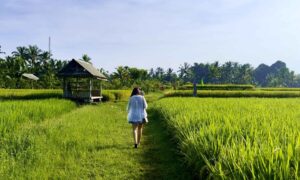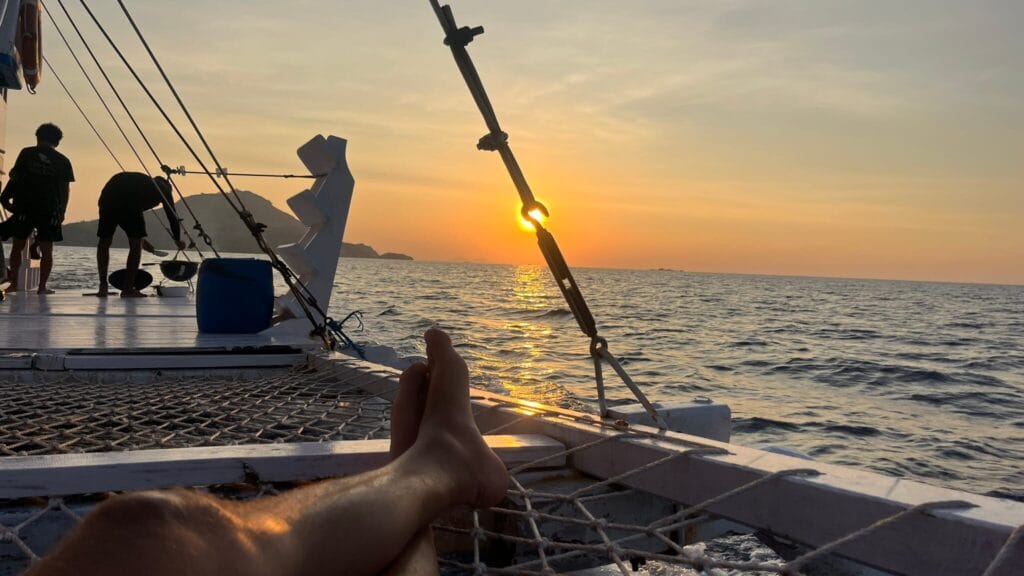
17.000 islands, one decision: which chapter do you start with? What are the best Islands in Indonesia – for YOU? Picture Bali’s soft welcome, Lombok’s open roads, Raja Ampat’s cathedral reefs and Mentawai’s thunderous surf. Indonesia isn’t one story, it’s many – yours begins here.
This beginner’s guide to the best islands in Indonesia for first-timers compares Bali, Nusa Penida, the Gili Islands, Lombok, Flores and Komodo, Sumba, Raja Ampat and the Mentawai Islands. Find the right island for your vibe, budget and season, with simple routes, ideal stays and easy ways to get there.
All Islands at a glance
Bali
Cafés, temples, waves
Nusa Penida
Cliffs and coves
Gili Islands
Snorkels & sunsets
Flores & Komodo
Dragons, reefs, boats
Sumba
Wild, cultural, off-grid
Raja Ampat
Coral, karsts, calm seas
Lombok
Surf, rice fields, volcano
Mentawai
Surf legend, remote
1. Bali: The Island of Gods
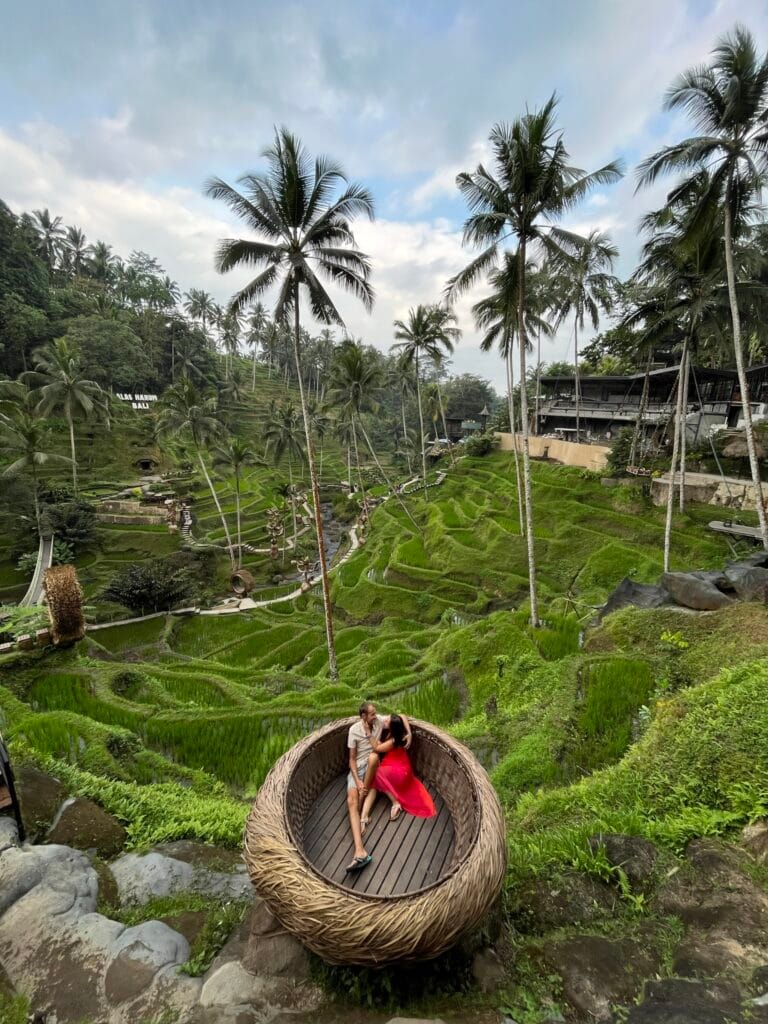
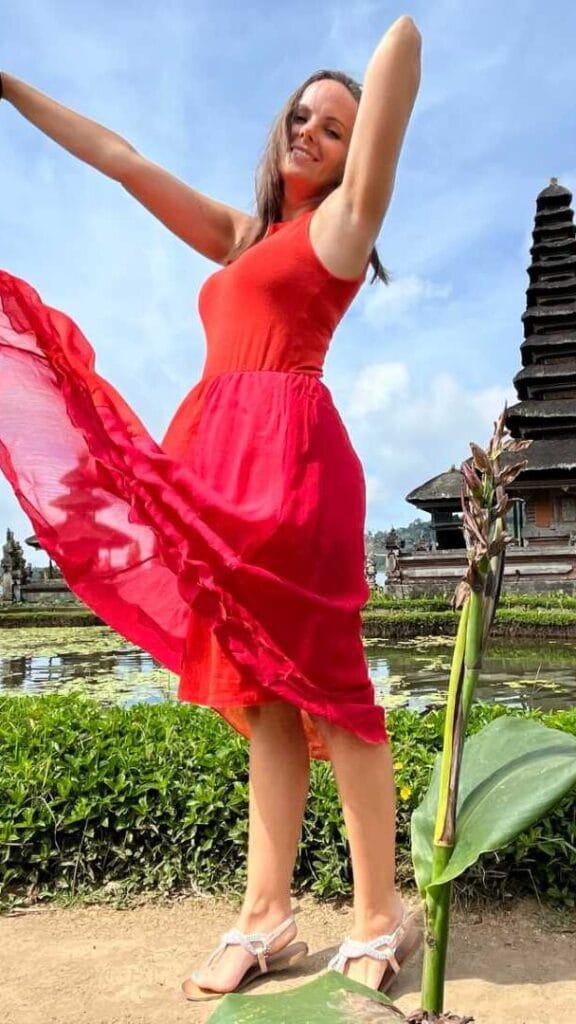
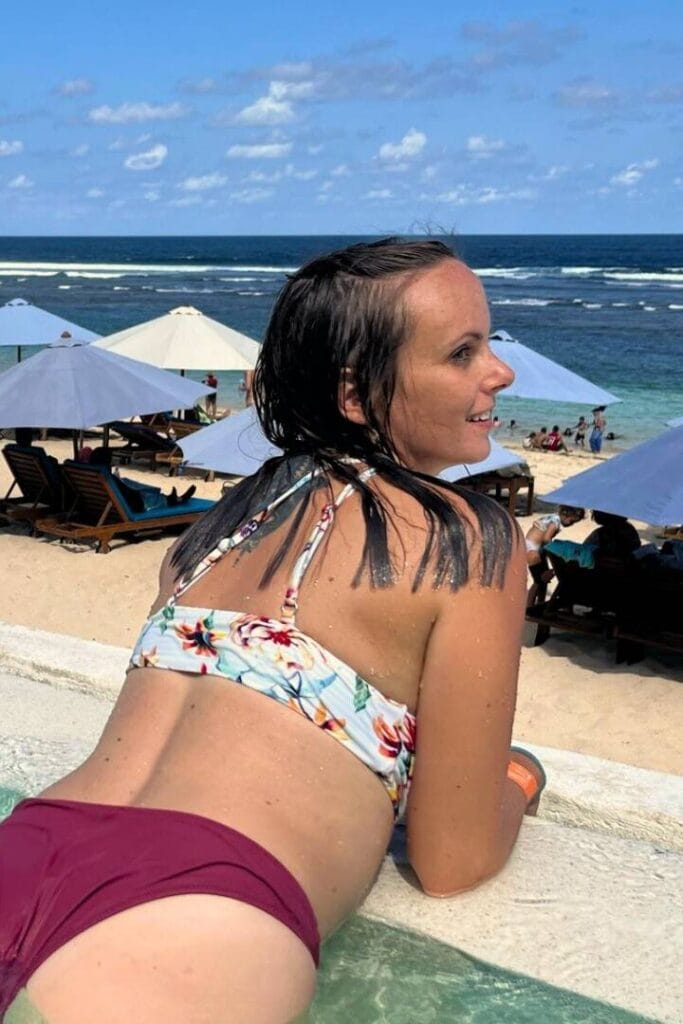
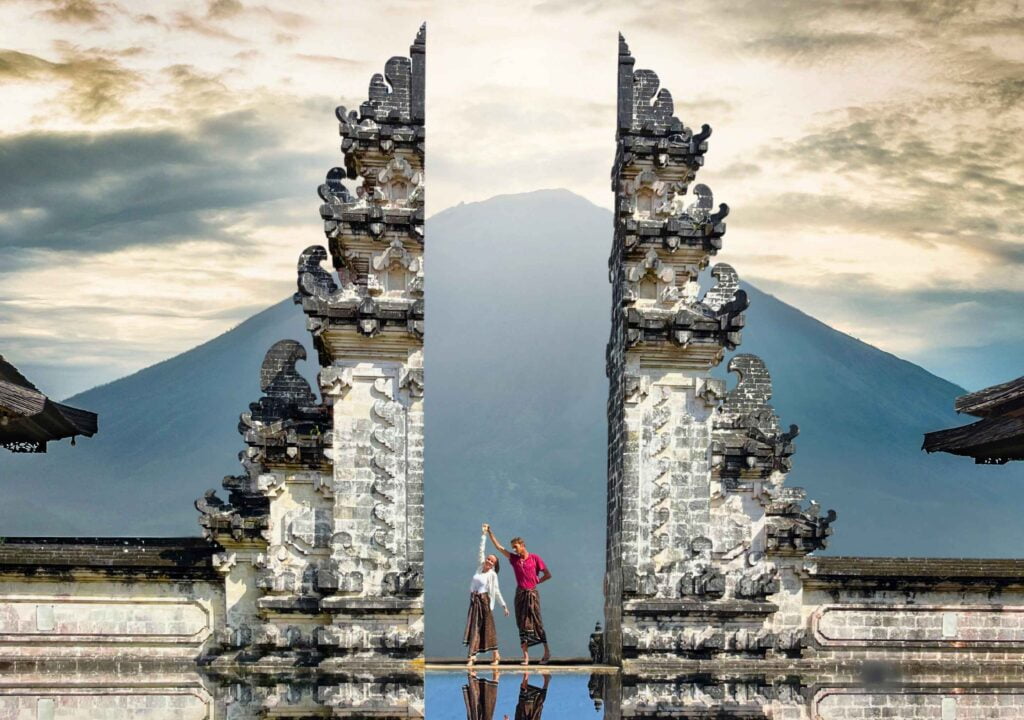
We have spent more than six months in Bali and our relationship with the island has changed. At first we disliked the traffic, the noise, and how busy the south felt. Over time we found calmer corners and a slower rhythm, and that is when we started to appreciate it.
Why Go
Bali is the most convenient starting point in Indonesia. International flights arrive daily, accommodation exists for every budget, and you can combine temples, rice fields, beaches, and nightlife without long transfers.
Highlights
Ubud is the cultural centre with ceremonies, craft markets, and rice terraces framed by jungle. Uluwatu and Canggu attract surfers, while families enjoy the shallow water at Nusa Dua. Hiking Mount Batur for sunrise is the classic adventure, followed by a soak in nearby hot springs.
The Flip Side
Traffic in the south is often gridlocked, waste management struggles, and prices are higher than on other islands. If you want a quieter experience, stay in Sidemen or Munduk where the pace is slower and landscapes are greener.
Our Take
Bali can feel overwhelming, but when you focus on one or two areas it becomes much easier to enjoy.
Ellis’ Tip: Planning more than a stopover? Our Bali Travel Guide covers visas, transport, budgets and the best months in detail.
Quick Glance – Bali
2. Nusa Penida: Bali’s Serene Neighbor
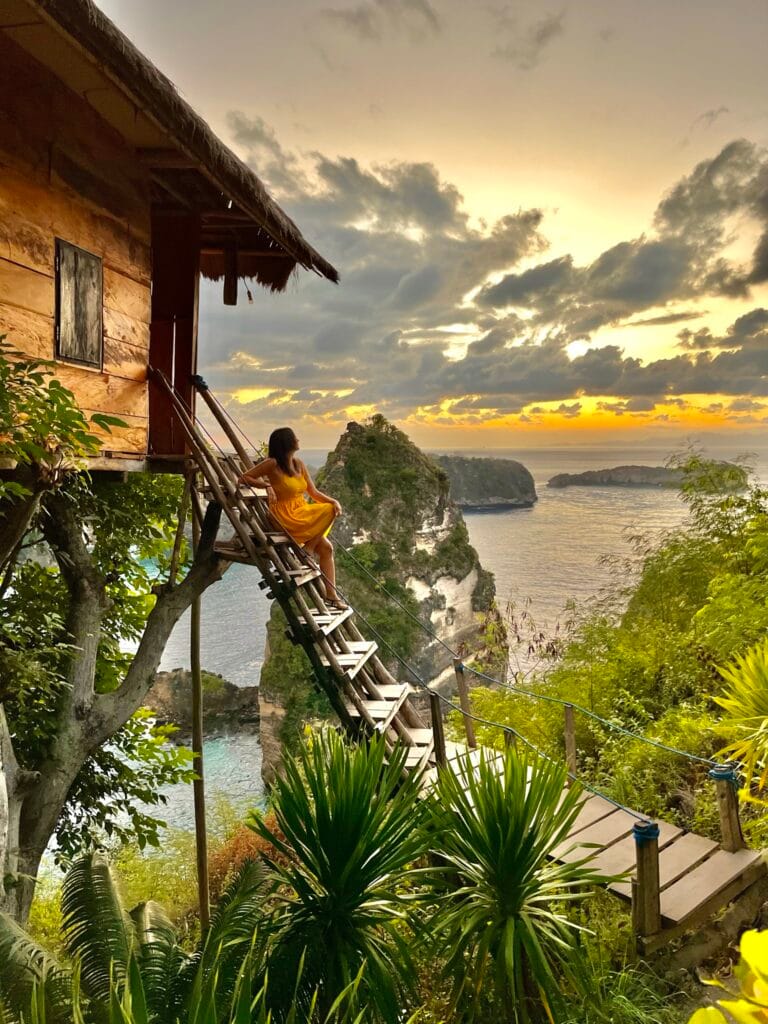
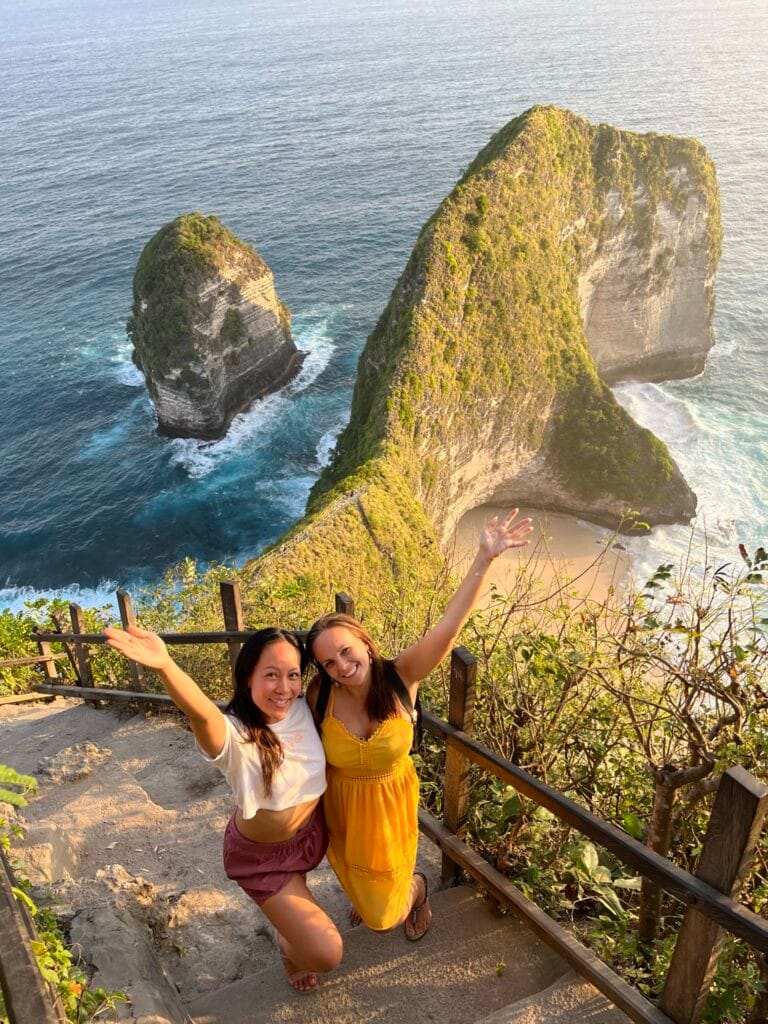
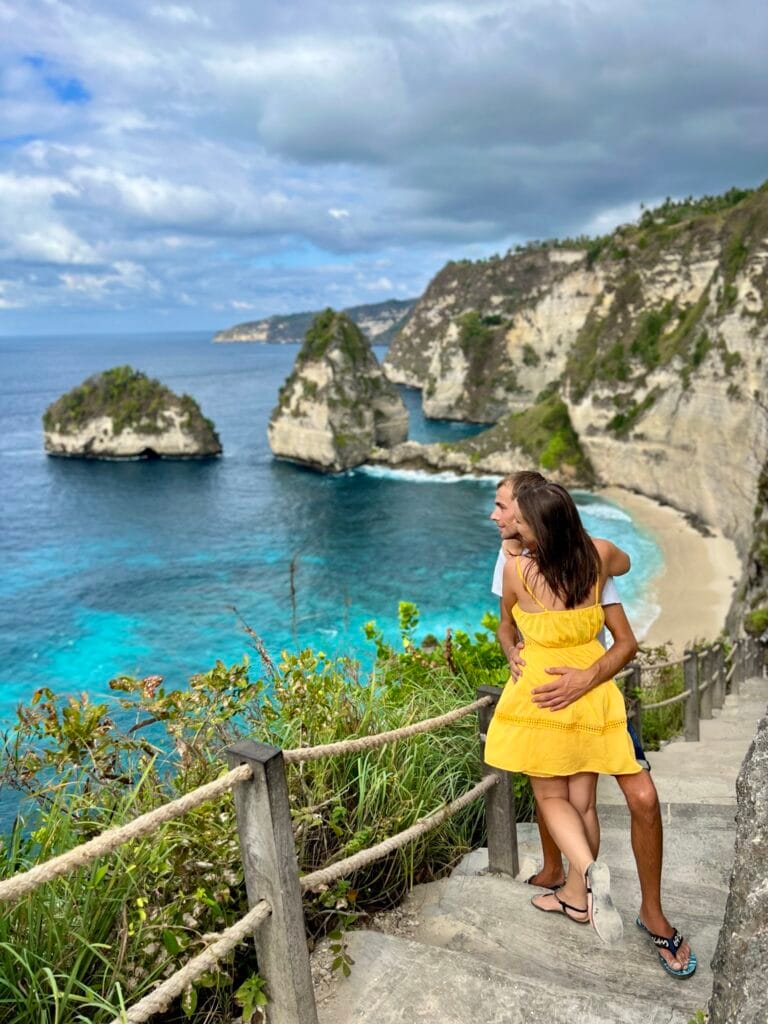
Even though Nusa Penida technically belongs to Bali, we list this stunning island separately. It feels different enough to deserve its own space. Just a short boat ride from Sanur harbor, the cliffs rise above turquoise water, and the first impression is wilder and more rural than the Bali mainland. We stayed overnight, and once the last boats left the island slowed down, revealing quiet roads and small villages.
Why Go
Nusa Penida is about coastal drama and raw beauty. Sheer cliffs drop into bright water, winding roads cut through jungle, and the pace is slower once the day-trippers return to Bali.
Highlights
Kelingking is the star, with its famous ridge leading down to a hidden beach. Diamond Beach and Atuh feel gentler and glow in the morning light. Staying overnight allows for snorkelling with manta rays before the crowds arrive and for sunsets at Crystal Bay.
Getting Around
We recommend hiring a private driver rather than renting a scooter. The roads are narrow, steep, and full of potholes, and accidents with tourists are common. Having a local driver makes the trip safer and lets you focus on the views instead of the traffic. We paid IDR 900,000 for two full days, which covered all the main sights without stress.
The Flip Side
Nusa Penida is not a hidden gem. Popular viewpoints are very crowded, and narrow, bumpy roads make scooters risky. Hire a local driver if you want less stress, and plan visits early or late in the day.
Our Take
It is easy to be put off by the traffic and queues, but an overnight stay gives space and quiet. Nusa Penida rewards those who slow down.
Quick Glance – Nusa Penida
3. The Gili Islands: A Trio of Paradise
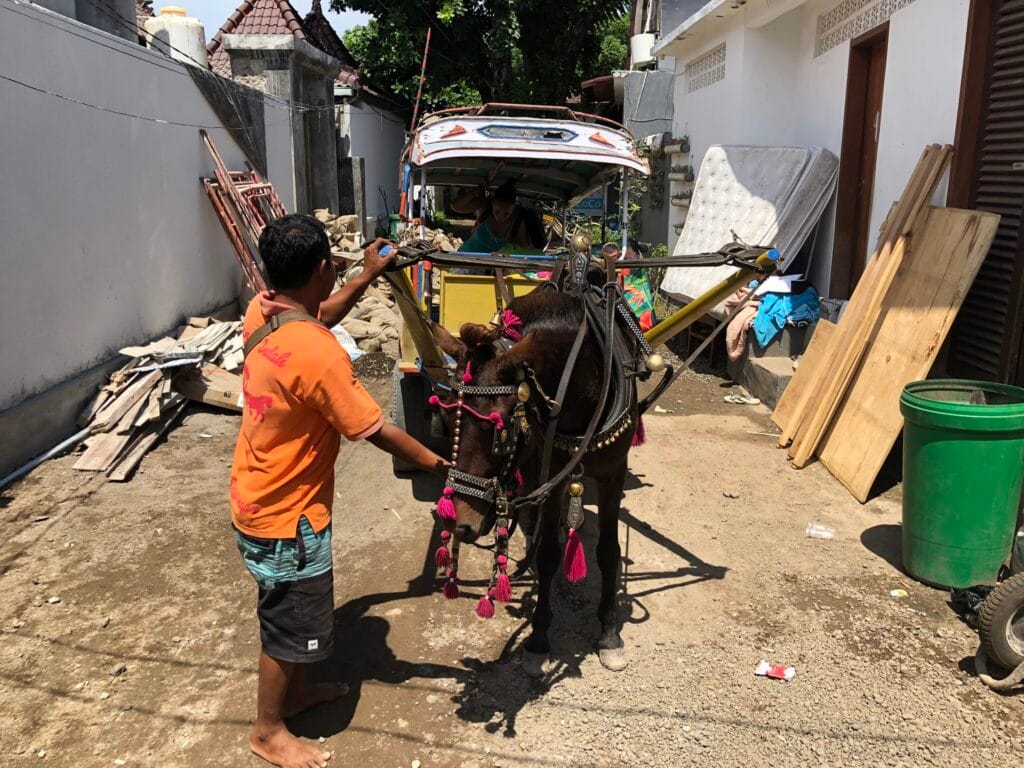
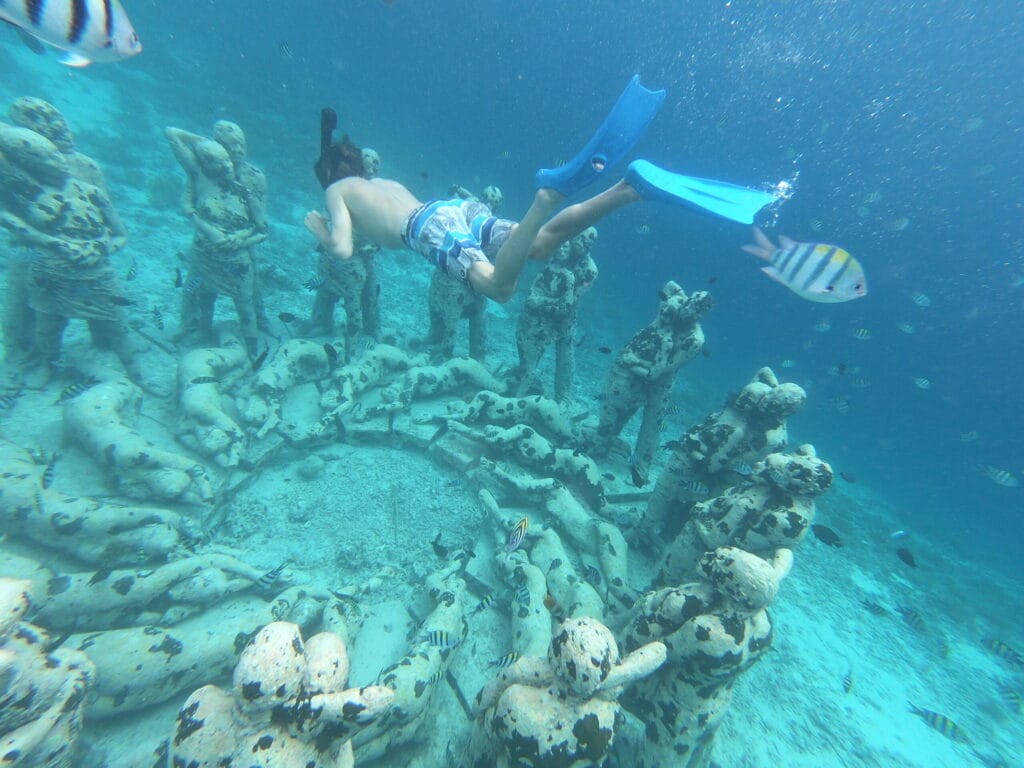
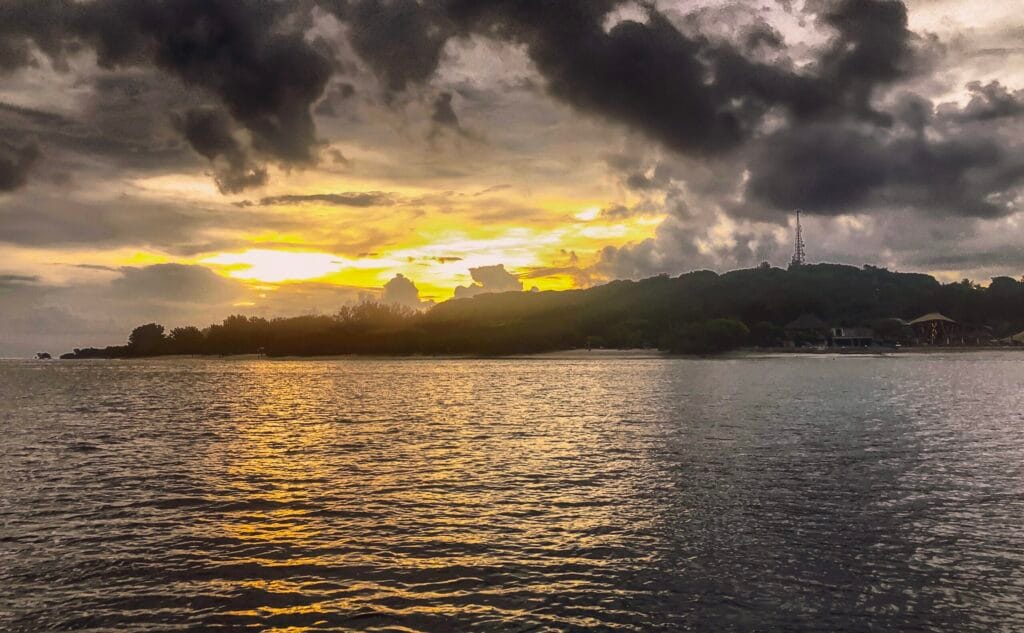
The Gili Islands sit just off Lombok’s northwest coast, but they’re often paired with Bali thanks to regular fast boats. We first arrived on Gili Air and were surprised how quickly life slowed down. With no cars or motorbikes, everything happens at bicycle or walking pace, and the sea is never far.
Why Go
The Gilis suit travellers looking for easy snorkelling, barefoot days, and small-scale island life. Each island has its own character, so it’s about choosing the one that fits your mood.
Highlights
Gili Trawangan is the busiest, with beach bars and hostels on one side and sunset swings on the other. Gili Meno is the quietest, popular with honeymooners and long empty walks. Gili Air sits in the middle, offering cafés, dive schools, and still a relaxed edge. Turtles are common when snorkelling right off the beach, and the underwater statues between Trawangan and Meno are a favourite stop.
Getting Around
No motorised vehicles are allowed. You either walk, rent a bicycle, or reluctantly use horse carts (cidomos). We recommend avoiding the carts for animal welfare reasons. The islands are small enough to circle on foot or by bike, and local boats run between them daily.
The Flip Side
The Gilis are heavily visited. Prices are higher than inland Lombok, and Gili Trawangan especially can feel crowded and noisy in high season. Expect limited infrastructure for waste and fresh water.
Our Take
We liked Gili Air best for balance, but each island has its charm. A few nights here pairs easily with Bali or Lombok.
Quick Glance – Gili Islands
💡 Ellis’ Tip: For the best chance to see turtles, snorkel from the east side of Gili Air around high tide — you don’t need a tour.
4. Flores & Komodo: Dragons and Island Cruises
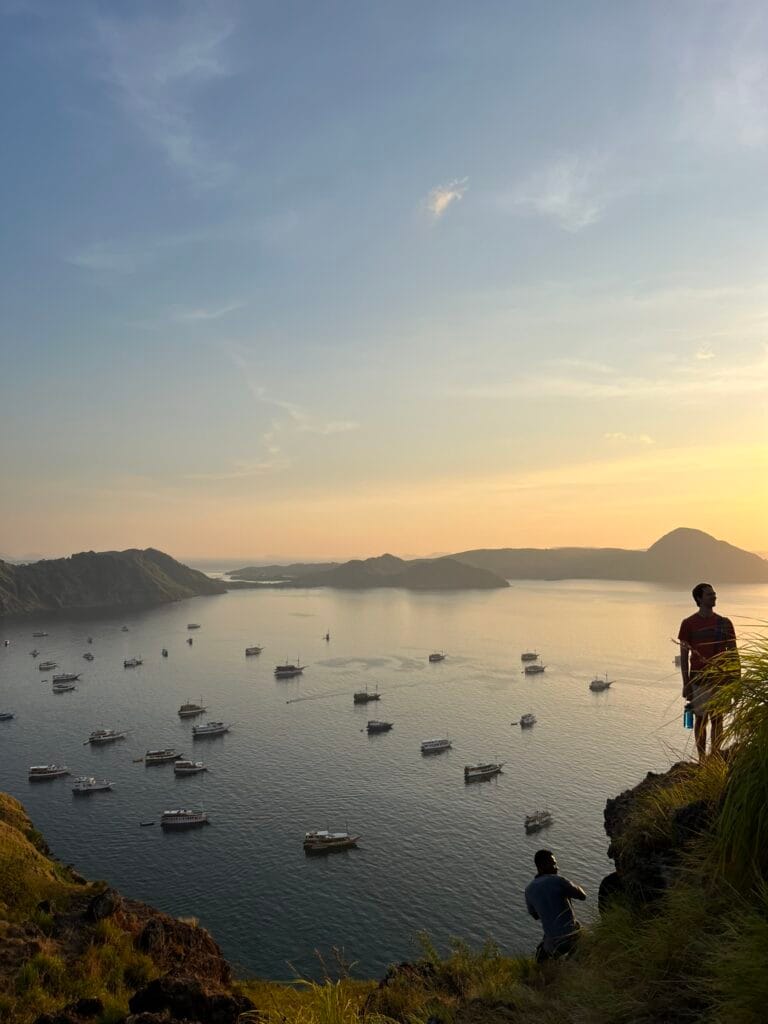
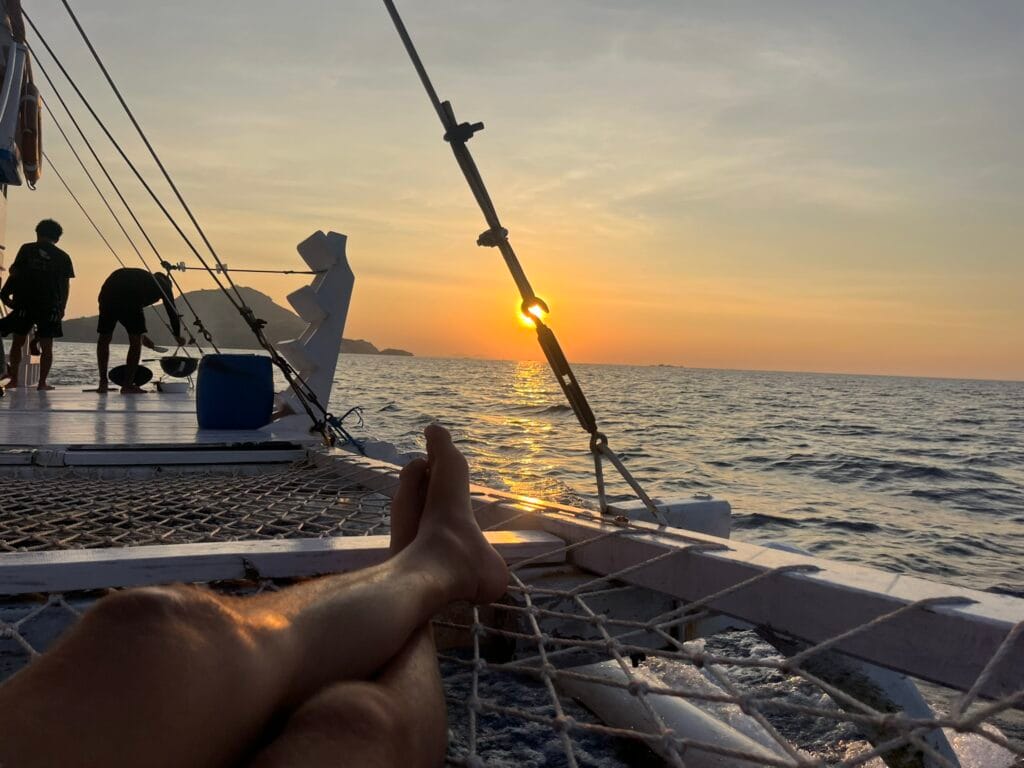
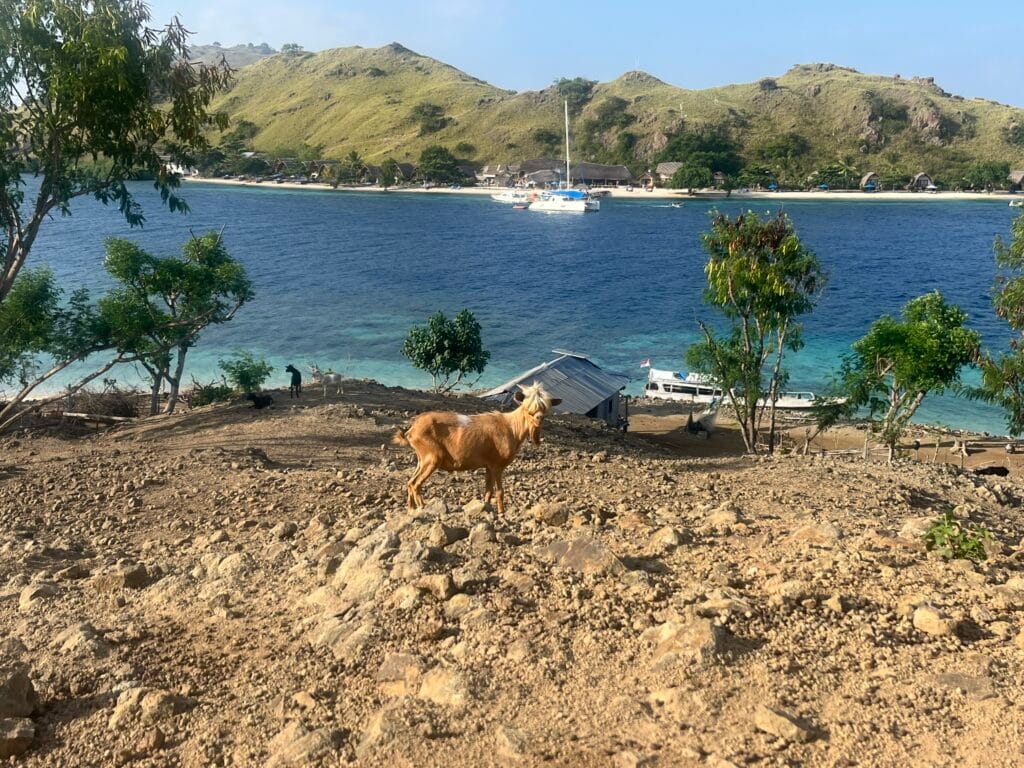
Flores feels different from Bali or Lombok – wilder, less crowded, and stretched out. We came for Komodo National Park and stayed longer than planned. The real highlight was a three-day boat trip, sleeping under the stars and waking up to empty bays. It was the rare kind of experience that lets you slow down instead of rushing from one viewpoint to the next.
Why Go
Flores is for travellers who want adventure mixed with nature. It offers Komodo dragons, pink beaches, rugged volcanic hills, and traditional villages that still keep their old way of life.
Highlights
Komodo National Park is the centrepiece. On a multi-day boat you can see the dragons, hike Padar for its famous ridge, and snorkel reefs rich with manta rays. Back inland, Wae Rebo is a mountain village where you can stay overnight in traditional cone-shaped houses. Around Labuan Bajo you’ll find sunset bars and dive schools for every level.
Getting Around
Flights connect Labuan Bajo (LBJ) with Bali and Jakarta. From there, you can join liveaboards, day boats, or multi-day cruises. We chose a three-day trip, which gave us time to explore without crowds.
The Flip Side
Labuan Bajo has grown fast and feels more like a staging town than a destination. Tours can feel rushed if you only book a single day, and boat safety standards vary. Choose a reliable operator and don’t cut your time too short.
Our Take
Flores and Komodo are best when you give them days, not hours. Sleeping on a boat and drifting between islands remains one of our favourite Indonesia memories.
💡 Ellis’ Tip: Don’t rush Komodo with a one-day tour. A liveaboard for two or three nights lets you see the dragons, snorkel with mantas, and still wake up to quiet bays.
Quick Glance – Flores & Komodo
5. Sumba: Off-Grid Culture and Wild Beaches

Sumba lies south of Flores and feels far removed from Bali’s bustle. It is larger than many expect, with wide beaches, traditional villages, and wild horses roaming the coast. Unlike Bali or Lombok, tourism here is still limited, and much of daily life follows old rhythms.
Why Go
Sumba is for travellers who want space and authenticity. It blends empty beaches with megalithic tombs, villages with traditional thatched houses, and cultural ceremonies that remain an active part of life.
Highlights
Walakiri Beach is known for its mangrove silhouettes at sunset, while Nihiwatu and Marosi stretch for kilometres without crowds. Sumba’s sandalwood horses are famous, and riding along the shore is often listed as a highlight. For a luxury escape, Nihi Sumba Resort is regularly ranked among the best in the world.
Getting Around
Flights connect Sumba to Bali and Kupang, arriving in Tambolaka (west) or Waingapu (east). The island is large, and most visitors hire a car with driver to reach beaches and villages. Infrastructure is basic, but that is part of the appeal.
The Flip Side
Sumba is not easy. Roads are rough, travel times are long, and English is less common. Costs for drivers and fuel can be higher than expected, and options outside resorts are simple.
Our Take
We haven’t made it to Sumba yet, but it’s firmly on our list. Everything we’ve learned suggests it offers a raw and cultural side of Indonesia that few visitors reach.
Quick Glance – Sumba
6. Raja Ampat: The Last Paradise

Raja Ampat lies off West Papua and often appears in diving magazines as one of the richest marine regions on Earth. We haven’t been yet, but it’s next on our list, and everything about it suggests a destination for those who want Indonesia at its most remote and pristine.
Why Go
The draw is underwater. Raja Ampat’s reefs hold some of the highest biodiversity on the planet, with manta rays, sharks, turtles, and endless coral life. Above water, limestone karst islands like Wayag and Piaynemo rise out of turquoise seas, creating scenery unlike anywhere else in Indonesia.
Highlights
Diving and snorkelling are the reason to come. Liveaboards and homestays allow access to multiple dive sites, and even snorkellers see manta rays in places like Manta Sandy. Boat trips to Piaynemo or Wayag provide the famous panoramic views of clustered karsts.
Getting Around
Flights connect Sorong (SOQ) with Jakarta, Bali, and Makassar. From Sorong, travellers continue by ferry to Waisai, the capital of Raja Ampat. From there, boat transfers reach homestays, eco-resorts, or liveaboards.
The Flip Side
Raja Ampat is remote and expensive. Travel involves multiple flights and ferries, accommodation costs more than elsewhere, and logistics are weather-dependent. This is not a casual add-on — it needs real planning and budget.
Our Take
We haven’t been yet, but Raja Ampat is firmly at the top of our list. Its combination of pristine reefs and unique island scenery makes it one of Indonesia’s most compelling destinations.
Quick Glance – Raja Ampat
7. Lombok: Quieter Shores Beside Bali

Lombok sits just east of Bali and feels both familiar and different. When we crossed over, the first impression was calmer: fewer people on the beaches, roads that open into rice fields, and mountain slopes that dominate the horizon. It offers much of what people look for in Bali, but with more space.
Why Go
Lombok is a good choice for travellers who want beaches, surf, and volcano hikes without the same crowds. It is less developed but still easy to combine with Bali or the Gilis.
Highlights
South Lombok is known for wide sandy bays like Selong Belanak and Tanjung Aan, where beginners can learn to surf. Mount Rinjani dominates the north — climbing it is tough but rewards with sunrise above the crater lake. Waterfalls such as Tiu Kelep give another reason to head inland, while Senggigi remains a base for sunset dinners.
Getting Around
Lombok has its own airport (LOP) with flights from Bali and Jakarta. Boats also connect Bali’s Padang Bai with Lombok’s ports. Distances are long, so most visitors hire a scooter or private driver.
The Flip Side
Infrastructure is patchier than in Bali. Roads can be rough, medical facilities are limited, and some areas feel quiet to the point of isolation. Development is growing fast, so construction noise can spoil the atmosphere in parts of the south.
Our Take
Lombok is not as polished as Bali, but that is why we liked it. The mix of quiet bays and open roads made it feel like Bali twenty years ago.
Quick Glance – Lombok
8. Mentawai Islands: Surf Legends off Sumatra


The Mentawai Islands sit off the west coast of Sumatra, reached by ferry or charter boat from Padang. We haven’t been yet, but it’s high on our radar for its reputation among surfers. This is one of those places where the name alone sparks excitement — often called a mecca for waves.
Why Go
The Mentawais are for surfers chasing world-class breaks and travellers looking for an off-grid retreat. Life here runs slower, with small villages, jungle-backed beaches, and simple homestays alongside surf camps.
Highlights
The waves are the reason most come. Spots like HT’s, Macaronis, and Playgrounds are known worldwide, with breaks for experienced surfers. For non-surfers, the islands still offer snorkelling, jungle treks, and the chance to see traditional Mentawai culture. Staying in a surf camp or eco-lodge lets you combine daily outings with a community vibe.
Getting Around
The usual entry point is Padang on Sumatra’s coast, then a fast ferry or private boat to the islands. Once there, boat transfers are the main way to reach surf spots or move between islands.
The Flip Side
The Mentawais are remote and not cheap. Ferries can be rough, storms can delay travel, and supplies are limited. This is not a casual beach holiday — it needs budget and patience.
Our Take
We haven’t been yet, but the Mentawais are firmly on our list. For surfers especially, the chance to ride legendary waves in such a raw setting feels worth the effort.
Quick Glance – Mentawai Islands
Plan Your Indonesian Adventure
Indonesia is not one story but thousands of islands, each with its own rhythm. Bali offers temples and surf, Lombok slows the pace with open bays, Komodo brings dragons and pink beaches, and the Gilis trade traffic for bicycles. Further afield, Sumba, Raja Ampat and the Mentawais show a rawer side of the archipelago.
Wherever you start, the key is not to do it all at once but to choose the island that matches your mood. Culture, diving, surf or quiet will shape the whole journey.
💡 Ellis’ Tip: Begin with one island that feels right for this trip, then let Indonesia draw you back for the rest. For practical advice on visas, transport, budgets and seasons, see our Bali Travel Guide.




